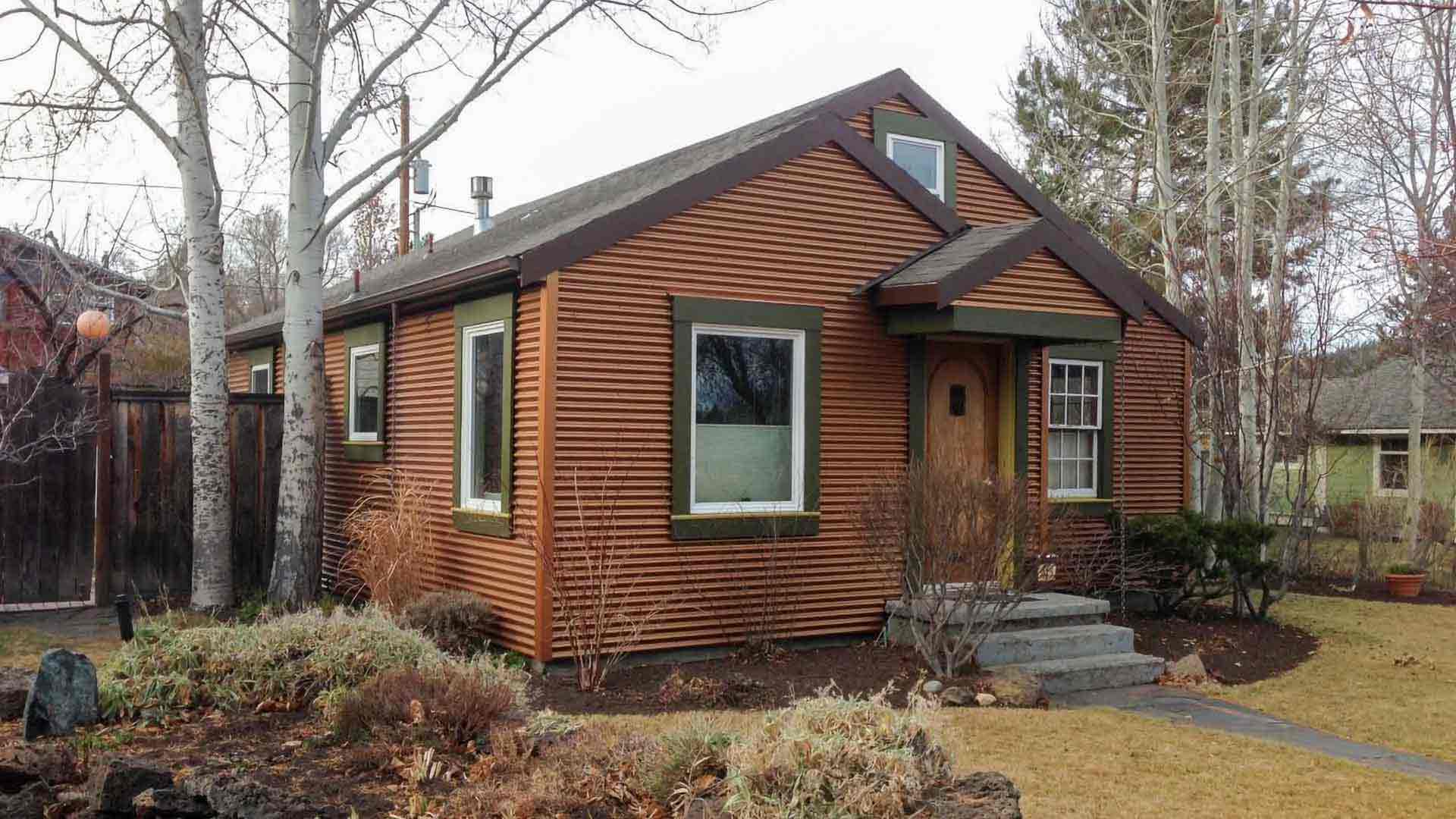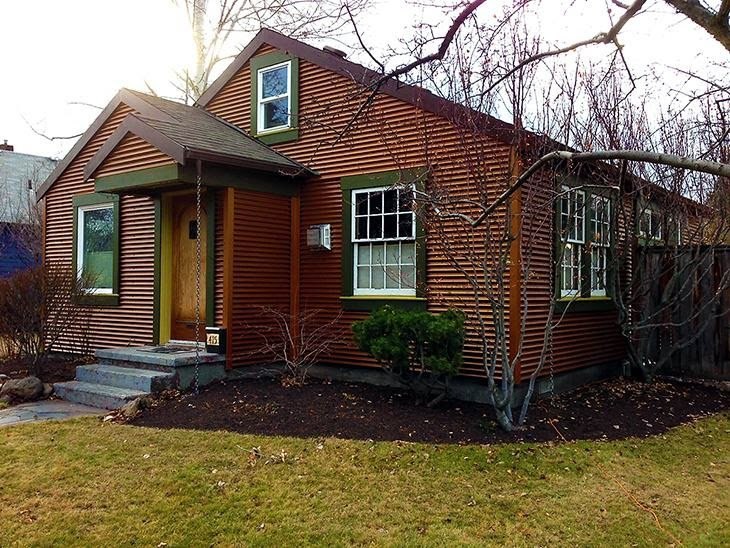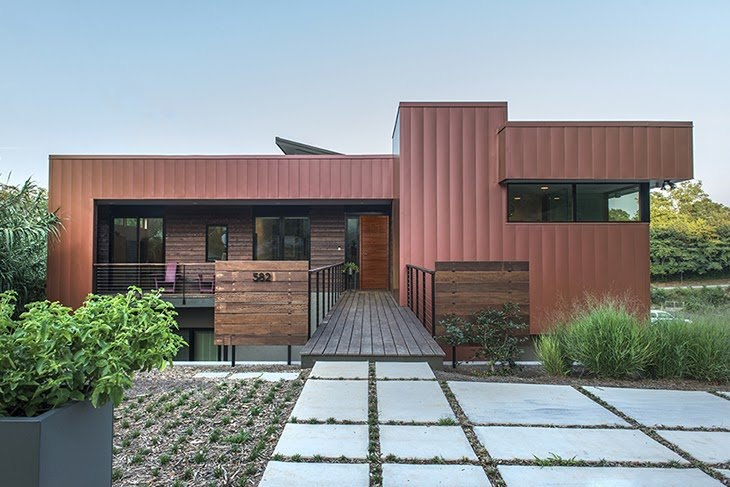What Gauge Should I Use For Metal Siding?
A single piece of paper is roughly .0038 of an inch thick. The measurement is so small that it probably sounds pretty insignificant. However, when it comes to metal gauge, a little bit goes a long way.
The thickness of metal is referred to as its “gauge”. If you’re considering metal siding for your home, one of the big decisions you’ll have to make is what gauge to use. This decision plays a role in the strength of your siding and how well it will function overtime.
The gauge is expressed by a number, such as 26-gauge or 29-gauge. The difference in thickness between these two gauges is around .0038, or a single sheet of paper. Though it doesn’t seem like much of a difference, the 26-gauge is better suited and more popular for siding.
At Western States Metal Roofing, we manufacture metal panels in a range of gauges to meet the requirements of any project. We get asked everyday about what gauge is best to use for siding. Using the right gauge is important to protect the longevity of your siding.
In this article, we’ll discuss what gauges are best for metal siding so you can have peace of mind that you are choosing the correct gauge for your home.
The Most Common Gauges For Metal Siding
While metal panels can be customized to be any gauge, they are most commonly found in 22, 24, 26, and 29-gauge.
Just like with metal roofing gauges, as the gauge number gets higher, the panel gets thinner. Therefore, a 22-gauge panel is the thickest and 29-gauge is the thinnest of traditionally sold metal panels for siding.
The thicker the metal, the more durable it is. However, as you can probably imagine the thicker metal also increases the price.
The industry standard for residential metal siding is 26-gauge. While this is generally the most used and recommended metal siding gauge, there isn’t a one size fits all situation.
While extra strength from a thicker metal is never a bad idea, not every siding situation needs the maximum thickness. But if you live in an area prone to hurricanes, tropical storms, heavy wind, or major snowfall, having a thinner gauge metal can be a major liability to your home.
Let’s go over when it’s best to use a thicker gauge for siding.
When You Should Use A Thicker Gauge For Metal Siding
- Location with harsh climate/storms
- Building structure
- Panel profile choice and paint system
Location With Harsh Climate/Storms
A heavier gauge means extra strength. If your home is in an area that is impacted by storms regularly or where the elements are known to be harsh such as heavy snow, hail, and high winds, you want your home to be protected.
A heavier gauge metal is better equipped to resist being bent, punctured, dented, or being blown off during hurricanes or severe storms.
Building Structure
The way your home is built and its spanning capabilities, or maximum distance between two intermediate supports for your home, can help determine what type of gauge you need. The thicker the gauge, the further you can span panels over open support.
For example, wood frame pole buildings have framing members that are spaced close together, so a 29-gauge metal panel would be acceptable to use. To make sure you understand your building structure and its capabilities, make sure to consult with a professional contractor.
Panel Profile Choice And Paint System
T-Groove Flush Wall Siding Panel
Your choice on gauge may be made easier depending on the panel profile you choose. This is because not every gauge is available in every profile.
For example, you will not be able to get 29-gauge panels if you are choosing a flush wall panel for your siding. Flush wall panels are only made in thicker gauges, generally 24 gauge.
The color and paint system that you choose will also affect which gauge is available. If you decide to go with a more expensive flush wall panel or wave panel these panels are only manufactured in a heavier gauge and a higher quality PVDF paint system. If you’re choosing a traditional and less expensive panel such as ⅞” Corrugated, R Panel, or Western Rib these are available in 26 gauge with an SMP paint finish or 24 gauge and a PVDF paint finish.
If you have bright and vibrant colors you should use a PVDF paint system as the color will fade at a lesser rate. Whereas if you have a more neutral color an SMP paint system would be appropriate.
If you would like to learn more about these paint systems we recommend that you read:
Best Paint For My Metal Roof Panels: SMP Paint v PVDF
Benefits Of A Thicker Gauge With Metal Siding
- Minimize denting
- Potentially reduces oil canning
- Durability
Minimize Denting
A thicker metal is more resistant to being dented on impact. A thinner metal like 29-gauge is easier to scratch, puncture or dent. Any object from hailstones to a baseball could leave its mark on metal siding. A heavier gauge reduces the likelihood of cosmetic damages.
Potentially Reduces Oil Canning
A thicker gauge helps combat one of metal’s most notorious problems: oil canning.
Observed as waves or wrinkles in metal panels after installation, oil canning is inherent in metal and hard to avoid. However, a thicker gauge makes it harder for the metal to change shape and helps reduce the severity of any oil canning.
Oil canning is rarely an issue with an exposed fastener panel such as R panel or corrugated. However, it can be an issue with flush wall panels. That is why you see flush wall panels manufactured in a heavier gauge. They’re not as strong and it will lessen the likelihood that the flush wall panel will have the appearance of oil canning.
Durability
The thicker the gauge, the stronger the panel. A heavy gauge metal can withstand gale force winds and storm conditions. It increases its wind uplift and impact resistance, or the metal's ability to withstand intense force.
Metal siding in general is a very durable material as it's resistant to pests, corrosion (as long as it’s not installed by the ocean), fires, and rotting.
Is A Thicker Metal Panel Worth The Extra Cost?
As we mentioned earlier, a thicker panel is always more expensive. The increased cost is the biggest downside to using a thicker gauge.
The cost of a 26-gauge corrugated panel will be about 15 percent higher than a 29-gauge corrugated from the same manufacturer.
When you compare a 24 gauge panel versus 26 gauge panel it will cost you 30% to 40% more. This is a significant difference and it’s because the panel will weigh about 30% more. In addition, most panels will also be a higher quality paint system with the 24 gauge panel vs the 26 gauge panel.
Whether or not it's “worth it” will vary from situation to situation. Your home may not require a thick gauge in which case you may choose to use a thinner and more affordable metal.
You can use a thinner gauge when:
- You live in a mild climate
- You choose corrugated panels or a panel that is available in 29-gauge or 26 gauge
- It’s suitable with your home’s spanning capabilities
You should use a thicker gauge when:
- You live in an area prone to heavy snow/rain and storm conditions.
- Looking for the strongest panel.
- Minimizing the chances of dents from occurring.
- Using a flush wall panel.
- The color that you want is only available in a 24 gauge.
Factors To Consider When Choosing Metal Siding Gauge:
- Is my home in an area with severe weather?
- Does my structure require a thicker gauge (spanning capabilities)?
- What gauges are available in the panel profile I want?









